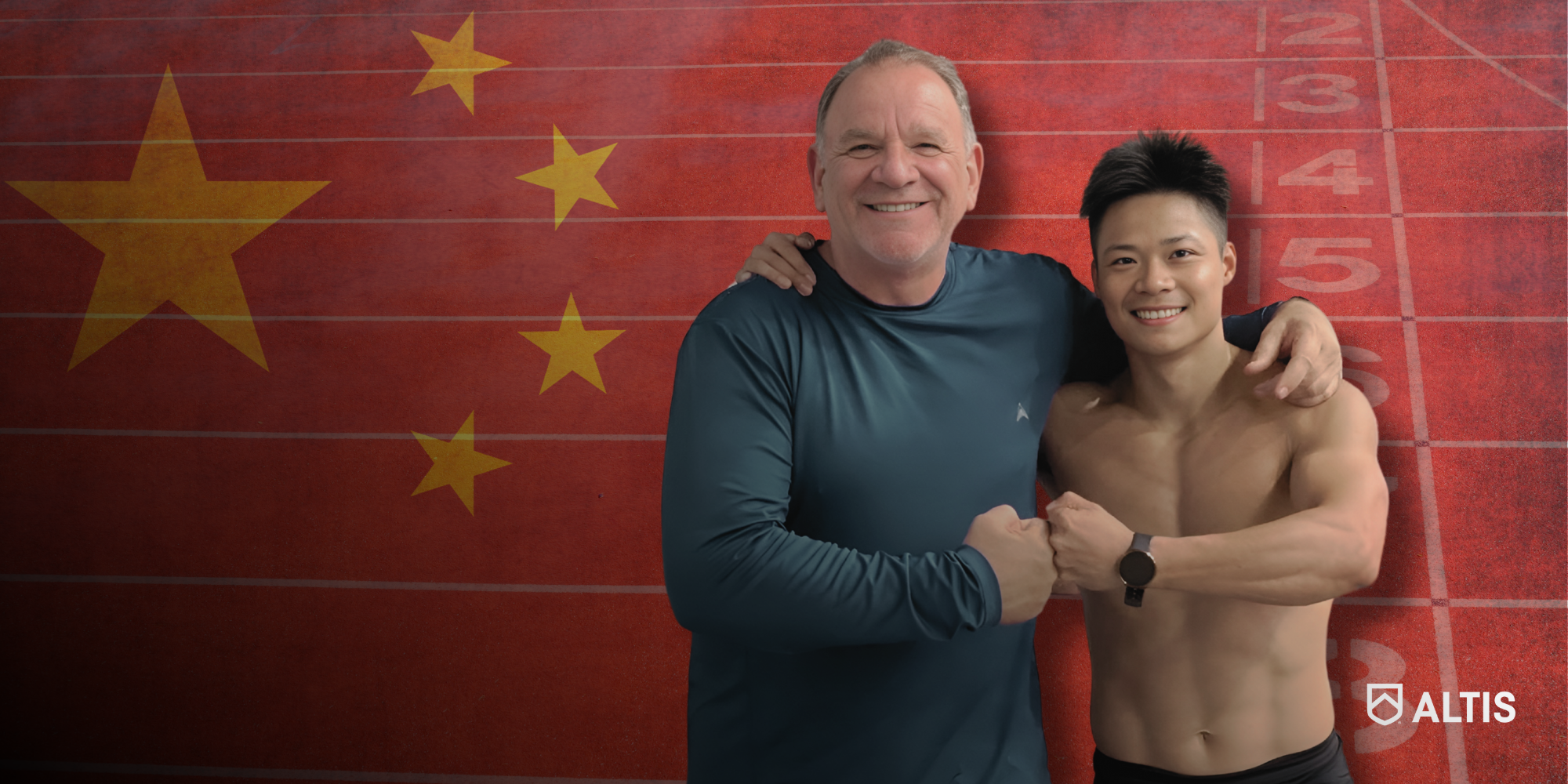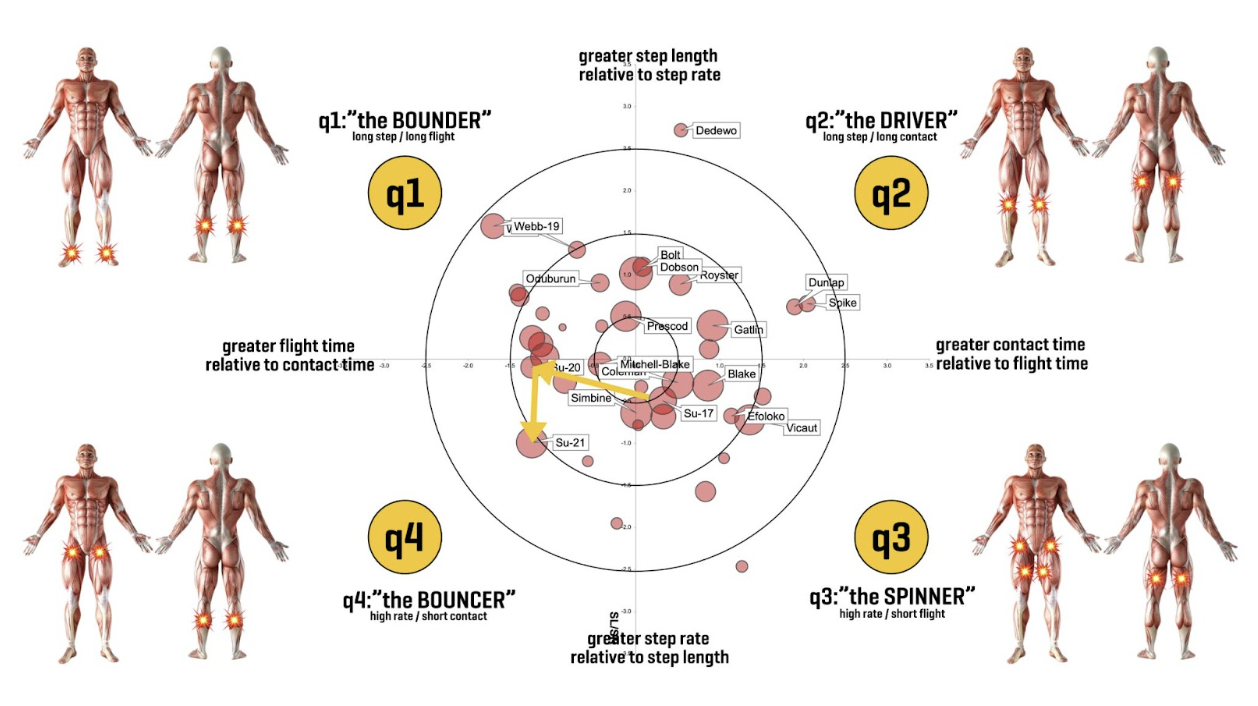In last week's post, I left you with a question about how you might use a Whole Body Motor Strategy System to inform your coaching or therapy. Did you give this some thought?
Any ideas?
Here are mine, if you’re interested:
- Inform sprinting mechanics
- Aid in training prescription
- Help predict injuries
- Monitor return to performance programs
- Establish cohort-specific norms
Let’s start at the beginning – how does a Whole Body Motor Strategy System [WBMSS] inform sprinting mechanics?

Well, quite simply – as we have discussed over the last few posts I've shared – we need to begin with identifying, understanding, and appreciating an athlete’s individual constraints [their structural & physical capacities] and how these constraints determine how they move.
An athlete cannot move in a way their body won’t allow.
We can’t expect Usain Bolt to run exactly like Su Bingtian. And we cannot expect Su Bingtian to run exactly like Christian Coleman.
While they are members of one of the world’s most-exclusive clubs [they are 3 of only 24 humans to ever run under 9.85 in the 100m], they move in very different ways – and as coaches, this is one of our most-important jobs: to understand these ways, so we can know how to help them improve.
If we don’t know an athlete’s most-natural and most-effective sprinting strategy, how do we know where their gaps are? How do we know which buttons to push in our training prescription? How do we know how to set up their technical model?
The answer is “we don’t … we are just guessing”.
Which is exactly what we have done for decades – where athletes and coaches either copy the mechanics of the best in the world, or [what the more scientific coaches do] apply a single “most-optimal” model to everyone.
As a community, it is imperative we come to grips with two truths:
- There is no single 'optimal' sprinting technique that works for everyone. Every athlete is different, and they will all use different strategies.
- Different athletes can achieve the same sprint performance using different movement strategies.
Does this mean it's a free-for-all?
No!
Despite no single precise technical model existing for all, there are clear general aspects of technique that are fundamental and translatable across all athletes in how they underpin the mechanical objectives of high sprinting performance. We are going to discuss some of them over the next few weeks.
But for today's post, let’s get back to how WBMSS informs sprinting mechanics.

Over the coming weeks through this series of posts, I will talk a lot about our own experiences – both with our own ALTIS sprinters, as well as some of the players on professional teams we work with.
But for today, I’d like to return to Su Bingtian, who we discussed last week.
As discussed at-length within our Re-Engineering Su Pocket Guide, Su’s coach Randy Huntington [along with his sport science support team] identified that the two key variables that Su lacked were 1] force production, and 2] ankle joint stiffness.
The graphic below shows Su at the start of this process, in 2017 [Su-17] as Randy just began working with him. You can see that his motor strategy was pretty close to Christian Coleman’s at that time – Su biased towards step-rate and ground-contact, relative to step-length and flight-time. He had a mild preference to ‘spin’.
The problem was, as Randy points out – he didn’t go anywhere, and he spent too long on the ground. Yes, he was a pretty elite 100m sprinter, but to improve, he needed a lot of work on these two important parameters.
So, over the next 4 years, Randy and Su worked on training strategies designed specifically to improve these two variables, and by 2020, he began to cover a lot more ground per step – his force production ability had increased to the point where his motor strategy drifted ‘northwest’, shifting towards flight over ground, and slightly towards length over rate [see Su-20 in the plot below].
By 2020, he improved his 100m time by almost a tenth of a second [from 9.99 to 9.91] and was positioned to be a major player in the upcoming Tokyo Olympics. The Covid delay on the Games, however, meant that Randy and Su could continue tinkering with Su’s strategy a little. Through the tests they had performed, Randy had observed that Su had lost a little frequency over the years, so they spent the next year or so reconnecting with this ability.
As you can see, this concentrated training focus had a significant effect, where Su’s strategy drifted ‘south’, towards greater step rate, and ultimately led to the fastest 60m split in history, and a new Asian record of 9.83.
While Randy used a sports science team, expensive equipment, and specific biomechanical metrics, he is one of few who have the means and the expertise to do this.
What the ALTIS WBMSS does is take all of the expertise that Randy and his team have, and synthesize it in a way that is understandable and actionable for those of us without the means.
This is what the new Motion-IQ update offers: you can now identify the specific motor strategy of every athlete you coach, using only a smartphone and five cones.
It’s a game-changer!
Thanks for reading. In my next post, I’ll show you how I’ve been using Motion-IQ to plot my group of sprinters, and how I’ve used the WBMSS to impact my own work.
Until next time,

P.S. If you haven’t checked out Re-Engineering Su yet, you really should.
It’s an awesome case study put together by Randy Huntington, the Coach of the fastest Asian sprinter of all time, and the man with the fastest 60m split in history. It’s a fast-paced, very practical take, designed to go through in an afternoon.
And did you know that Randy also coached Mike Powell to the still-standing world record in the long jump?
He’s truly a very creative thinker – and one of the most-respected coaches in the industry.
And in Re-Engineering Su, he shares all his secrets.
ENJOYED THIS POST?
SIGN UP FOR OUR FREE WEEKLY NEWSLETTER - HOW WE MOVE - and get weekly insights into movement for team sports.



